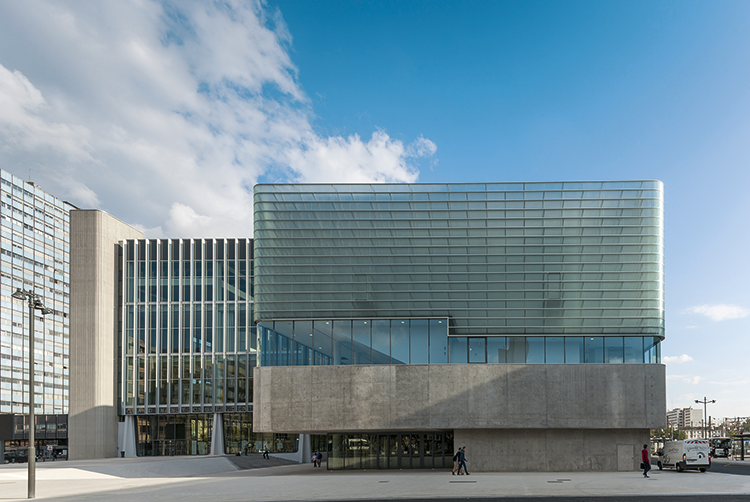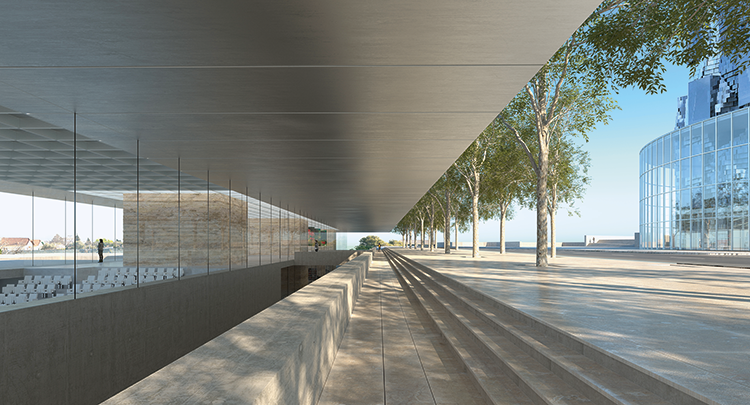
Marc Barani, ”My ideal future resides in the tension between opposites”
This summer, alongside the works of Frédéric Borel and Ibos & Vitart, the Cité de l’architecture & du patrimoine in Paris exhibited the work of Marc Barani, laureate of the Grand Prix national de l’architecture in 2013. Still, it is not this official recognition that is behind AA’s invitation to the French architect born in Menton in 1957. It is true that such awards reflect talent, but the decision to propose the co-conception of AA’s September issue to Marc Barani was primarily based on a desire to share his ideas, which remain effortlessly independent of contemporary manichaeistic debates. Also, this issue allows us to share his commitment —he is well known for figuring among the craftsmen behind France’s LCAP law of 7 July 2016 relating to creative freedom, architecture and heritage— and to (re)discover his architecture which, in line with the thought process from which it stems, cannot be summed up in a drawing, no matter how eloquent it may be, but replies to a body of sometimes contradictory issues. “Truth is hybrid”, the architect likes to repeat. For AA, Marc Barani has drawn up a personal lexicon placing the public vocation of architecture within a heritage— innovation dialectic of which architects are ultimately the only guarantors.
TERRITORY
Last May, in a speech given at the awards ceremony for the Pritzker Prize winner Arata Isozaki, the French President Emmanuel Macron said, “I think that there is no art as political as yours in the strictest sense of the term. To be an architect is to be the person who decides to organise how people live collectively, who is political in the most basic sense, the person who tries to define the rules.” Many elected officials do not recognise the political dimension of architecture, so there is cause for hope that this declaration serves as a catalyst for change. Particularly because the French law of 3 January 1977 established the public interest of architecture, which deserves to be renewed. The network that exists in France composed of the CAUE (Conseils d’Architecture, d’Urbanisme et de l’Environnement —advisory bodies on architecture, urbanism and environment), the DRAC (Directions Régionales des Affaires Culturelles —regional management of cultural affairs), competitions, the MIQCP (Mission Interministérielle pour la Qualité des Constructions Publiques —inter-ministerial mission for the quality of public building). All of these structures which have been set up by the state in order to nurture the regions are now worn out and need revitalising. There is the wear and tear of time, but also the State’s objectives themselves that have shifted, as the coffers have emptied, from the application of public policy to the controlling of private projects. It is no longer public money that represents the essential vector of regional development. How can we get back to a regulatory state? While the great metropolises manage to self-regulate with the help of public development agencies, the management of smaller areas remains unresolved. In the words spoken by our President, there is a yellow shadow, of which he is fully conscious: whole swathes of the country that have been forgotten.
INFRASTRUCTURE
The Nice tramway terminal [65,000 sq.m built in 2007] is a project that is simultaneously both architecture and infrastructure. It is rare to be able to incorporate the two areas of activity and combine their strengths to transform life in a neighbourhood. A territory is primarily irrigated by infrastructure and in the longterm it is this that remains. Roman roads are still in use. In 2012, as part of the Agora architecture biennial in Bordeaux, we looked at the lasting power of urban structures when submitted to rapid, sometimes violent transformation, such as the destruction caused by war, colonisation, or rampant property speculation, focusing on five cities (Beirut, Dresden, Dubai, Ouagadougou, Rotterdam). We see a common theme, whatever the different cultures: roads, the courses they follow, and infrastructure remain unchanged, while the division of land is slowly restructured and the buildings themselves change very quickly. Infrastructure is the essential framework of an area. Didn’t the Grand Paris project kick off with Grand Paris Express, an infrastructure project? And if the Olympic village for Paris’ 2024 Olympic Games is located in Saint-Ouen, this is only made possible by the existence of the new Saint-Denis Pleyel station. The hybridisation between infrastructure and architecture is essential in thinking about urban density or topographical and geographical complexities. Sadly today architecture and infrastructure are disciplines that find it hard to communicate and which commissioning bodies treat as entirely separate entities.
You can read the whole version of this article – written by Emmanuelle Borne – In AA 432nd issue, available on our online shop.


